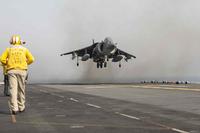Dr. Gerardo Melendez recently took over as the US Army's top weapons wizard, shepherding a staff of 3,600 scientists and engineers at the service's Armaments Research, Development and Engineering Command.
 That means it will fall on Melendez to ensure the smooth deployment of the Army's new XM-25 counter defilade weapon and the continued development of cased-telescoped ammunition and the weapons that fire it -- among other things, of course.
That means it will fall on Melendez to ensure the smooth deployment of the Army's new XM-25 counter defilade weapon and the continued development of cased-telescoped ammunition and the weapons that fire it -- among other things, of course.
With a career in government research and development since 1983, Melendez holds a master’s degree in electrical engineering from Brown University and a Ph.D. from Drexel University. Before joining ARDEC, he worked at the Army’s Communications Electronics Research, Development and Engineering Center (CERDEC) at Fort Monmouth, N.J., where he specialized in bringing advanced communications and computer technologies to the battlefield.His years of experience and multiple duties at CERDEC yielded outstanding results for the troops in combat, which he aspires to carry over in his upcoming years at ARDEC.
Melendez will also have to help manage what could be a massive internal war within the Army as it battles separate constituencies over how or whether to improve or replace the venerable M4/M16 and its Stoner design. We hear that -- like the Corps' battle over the M-16A4 and the M-4 a few years back -- many stakeholders within the Army are digging in their heels over which path to take. And it will fall on Melendez to both contribute constructively to that debate and manage its outcome.
But, according to a story about him posted on the Army's Web site back in August, the weapons scientist is no stranger to deep-seated fights.
He had been placed on a joint "tiger team" as the Army representative in combat identification, an endeavor devoted to helping Soldiers avoid friendly-fire casualties by making them aware when a would-be target is actually "friendly."During his tenure, his team demonstrated technological solutions to the problem.
However, since those solutions must operate on so many of the weapons, ground vehicles and aircraft that occupy a battlefield, and since that equipment is outfitted by the Army, Navy and Marines, arriving at the solution was complex.
Adding more complexity was the fact that because the U.S. typically operates with allied nations and coalition partners, they would also have to join in the solution to avoid accidental killing among allied Soldiers.
In short, the complete and enduring solution was out of reach.
Yet Melendez learned from that disappointment.
"You really have to get many different stakeholders to align and decide whatever you're trying to do," he said.
...tell us about it. And when it comes to weapons and ammo, everyone's got an opinion. Good luck Dr. Melendez!...








